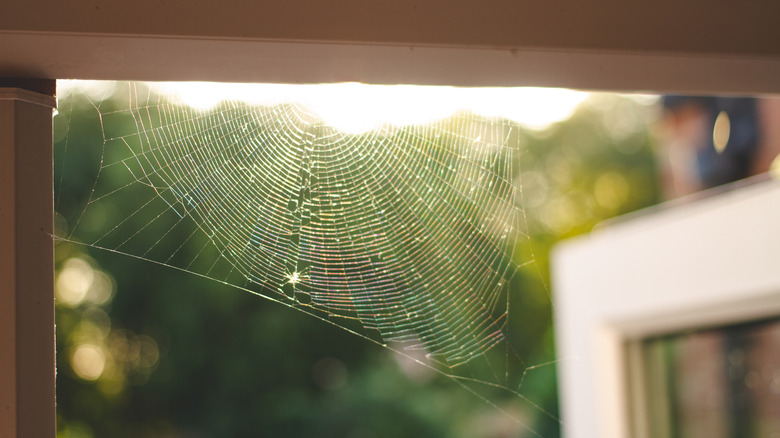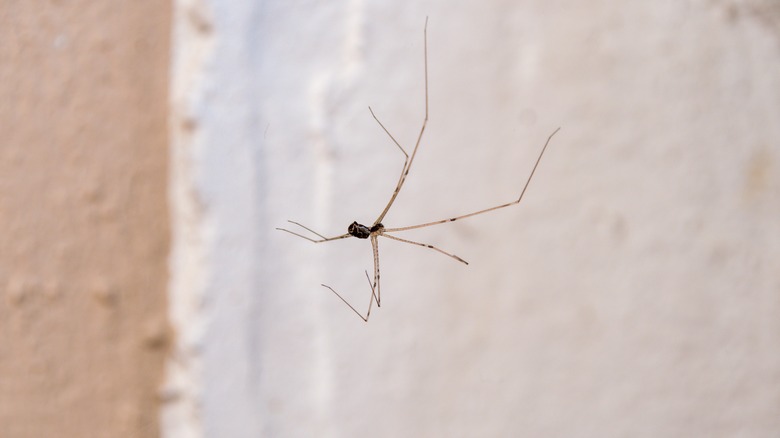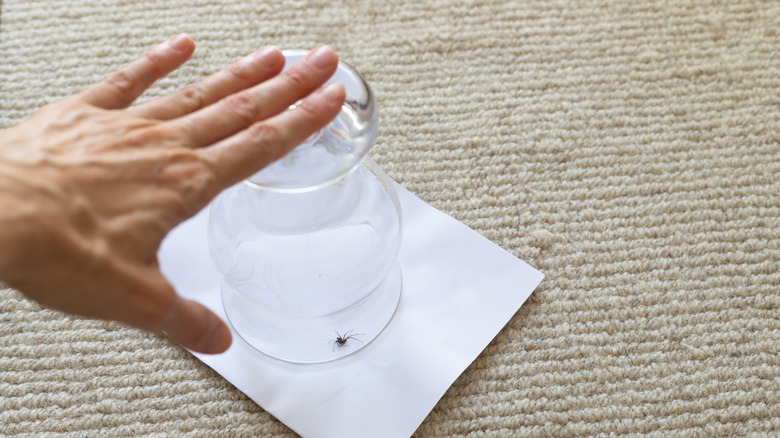Beneficial Spiders You May Not Want To Kill In Your Home
Spiders don't have the best reputation. Arachnophobia is one of the most common phobias there is, and many people's first instinct upon seeing a spider is to run away or kill it. But that bad rep is mostly due to how they look, rather than how they behave — in fact, once you learn the benefits of having an eight-legged roommate, you might think twice before trying to get rid of spiders.
Spiders and humans share a common goal: Killing other creepy crawlies in your home. A single spider can eat 2000 insects per year, including troublesome and disease-carrying pests like mosquitoes and roaches. Research shows that spiders help lower the prevalence of malaria. They largely avoid humans if possible, preferring to nest and hunt in places we don't frequent. And only two species in the U.S. are dangerous enough to humans that their risks outweigh the benefits: The brown recluse and the black widow. While there's no need to go out of your way to bring spiders into your house, if you see one of these beneficial arachnids, consider leaving it alone or relocating it rather than killing it.
Beneficial spiders to look out for
Most common household spiders are beneficial, including the well-known daddy long legs, tiny house spiders, hairy wolf spiders, and jumping spiders. These species eat a wide range of insects (as well as fellow spiders), including wasps, flies, roaches, ants, mosquitoes, fruit flies, and ticks. Daddy long legs will even kill the dangerous black widow.
Some beneficial spiders in your home might be mistaken for the brown recluse; these include the crevice spider and the hobo spider. A crevice spider can be differentiated by its eight eyes, compared to a brown recluse's six. It tends to live in crevices and corners, hence its name. A hobo spider doesn't have a brown recluse's violin-shaped mark on its body and lives in the Pacific Northwest rather than the South.
Importantly, these beneficial spiders aren't a danger to humans like the brown recluse or black widow. Spiders are very unlikely to bite unless provoked, and the bites typically aren't harmful to humans. The wolf spider and yellow sac spider are two common species that do have a venomous bite, and these can typically be treated easily at home.
What to do instead of killing spiders, and when to get help
"Beneficial" doesn't mean "friendly." Don't attempt to pick up spiders in your house and never touch them with your hands. Instead, leave them be or use a cup and piece of paper to relocate them outside away from your house. If you suspect it to be a dangerous species, don't try to relocate it — call a professional for help, as these critters can be difficult to eradicate on your own.
While rare, spider bites do happen. They may sting or cause a skin reaction such as redness or swelling. Venom reactions vary from person to person and pose a bigger risk to immunocompromised people or people with pre-existing health conditions. Bites can also trigger an allergic reaction with symptoms like nausea, fever, stomach cramps, chest tightness, joint soreness, or trouble breathing. If you experience these symptoms alongside a bite, go to the hospital and bring the spider for identification if you can, even if it's been crushed.


